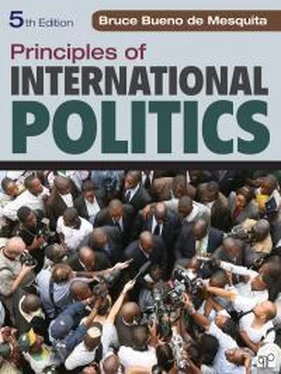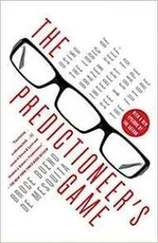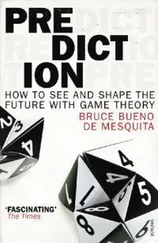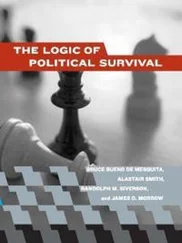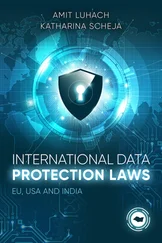Because historical examples, concepts, and techniques are interspersed throughout, always in mutual support of each other, the book can readily be taught from a variety of perspectives. The instructor can emphasize events; ideas; hypotheses; historical analysis; formal analysis; or statistical analysis as suits his or her style, needs, and preferences.
To facilitate learning, the fifth edition offers a number of pedagogical features and enhancements. Each chapter begins with an outline of the major ideas and arguments of the chapter (the Overview section) and ends with a summary that highlights the major points, helping to set up the discussion and bring it to a logical conclusion. Following the Overview section, every chapter has a brief, entertaining quiz in the Assumptions Check section. I say entertaining because these quizzes are designed to ask big questions for which most people think they know the answer, and the answer they think they know is incorrect or incomplete. These quizzes are intended to initiate thinking about how to think about international issues in a subtle and nuanced way. As I have learned in my own classroom experience, they are a handy way to introduce ideas about selection effects; sampling bias; counterfactual reasoning; reverse causality; and strategic, endogenous choices. Each of the quizzes is followed by answers printed at the chapter’s end. I encourage instructors and students to explore these questions and contemplate the implications of alternative responses.
Because the book introduces students to many new and important concepts, students will find those key concepts boldfaced in the text. There is also a well-refined, extensive glossary of key terms and ideas at the end of the book so that students can spend their time learning ideas rather than memorizing terms. The book also has two indexes (subject and author)—both of which serve as valuable guides for students who want to explore the field further or begin to do bibliographic or original research.
As in previous editions, the theoretical arguments and historical and contemporary examples are accompanied by an array of figures, charts, tables, maps, and images. These include substantial, contextual captions that allow the illustrations and figures to stand alone as summary statements of important ideas. In addition, Try This boxes found throughout each chapter pose questions that students can solve by applying concepts introduced in the book. (Some of these are picked up in the student workbook, Applying the Strategic Perspective, as problem sets.) Everything has been designed to stimulate students’ interest and understanding and encourage students to continue their investigation of international relations while having fun with the subject and filling them with aha moments as they listen to news reports or take other courses where the ideas here will provide an aha perspective.
A UNIQUE TEACHING AND LEARNING PACKAGE
More than ever, students and adopters will find excellent support for these diverse approaches in the ancillary materials that accompany the text, including the student workbook, the companion website for students, and the instructor’s resources that are available for download. The superb student workbook— Applying the Strategic Perspective —thoroughly revamped for the fifth edition by Professors Alejandro Quiroz Flores and Anna Getmansky, provides detailed coverage and more extensive problem sets than in earlier editions. New problems early in the chapters help beginning students work through some of the nuts-and-bolts aspects of the strategic perspective—everything from learning to create and interpret symbolic expressions to helping identify independent and dependent variables. At the end of each chapter, students who wish to do so are able to stretch their capabilities with more complex problems in the Extensions section.
Students will find a host of resources available to them on the companion website at http://bdm.cqpress.com. Brief chapter summaries and questions for review help guide student learning by identifying and clarifying key concepts in each chapter. An interactive Flashcard feature enables students to study and review key terms and tells them where each is located in the text. Online quizzes feature multiple-choice and true/false questions to allow students to self-test and report scores to instructors. Exercises for each chapter provide students and instructors with opportunities to practice basic problems either alone or in class. Finally, Walk Throughs allow students to explore difficult problems in an interactive setting, helping them see how to conceptualize and solve significant international relations problems tackled in the text and the supporting materials.
Students and instructors interested in my online policy forecasting software for classroom use can register for free at www.predictioneersgame.com. Just click on the game tab, click on “Access the online game here,” register for the student version, and once authorized (I do this almost daily; if there is a delay, send me an email at bbd2@nyu.edu and I’ll get on it right away), read the online training manual and you are ready to go. This software is similar to that used by the US government in making major foreign policy decisions and by large corporations in dealing with significant policy choices. Simplified for easy use and interpretation, students can use the Predictioneer’s Game to explain and predict current international problems, whether these involve issues of international political economy, security studies, or anything else.
A full set of instructor’s resources is available for download at www.cqpress.com/prof/Ancillaries-Download.html. These include the following:
• A comprehensive test bank with more than 400 multiple-choice and short essay questions created by Anna Getmansky. The test bank is available in Word and WordPerfect formats as well as fully loaded in Respondus, a flexible and easy-to-use test-generation software that allows instructors to build, customize, and integrate exams into course management systems.
• A set of 280 PowerPoint lecture slides and a full set of Walk Throughs from the web, written and edited by Anna Getmansky for the fifth edition, for use in lectures and to help ease class preparation.
• All of the tables and figures from the fifth edition textbook and workbook in .pdf format and PowerPoint slides for classroom presentation.
• An instructor’s manual with “at a glance” lists of topics and methods, discussion of key topics and arguments, lists of important points to bring up in class, discussion questions, and links to relevant topics in the book.
ACKNOWLEDGMENTS
Principles of International Politics is my effort to explain a way of looking at international relations and reshape how the subject is taught. If it succeeds in doing so, the credit belongs to those who have helped me along the way. A textbook provides a unique opportunity to express thanks not only to those who helped with the book at hand but also to those whose teaching, inspiration, and guidance shaped the way I think. It is my pleasure to take this opportunity to thank them here.
This book was inspired by Kenneth Organski, my teacher, mentor, and friend. Without his urging, it surely would not have been written. To be fair, Ken tricked me into writing the book, but that is another story. This was to have been a joint effort by Ken and me, but the tragic terminal illness of his daughter and then his own sudden death precluded that collaboration. How I wish I had his wisdom, insight, and elegant turn of phrase to share with you throughout this book. He is missed by all who loved him. And to have known him was to have loved him.
William Riker’s shadow will be found on every page of this book. The principles of international politics are every bit as much an expression of his understanding of politics as they are of mine. Never have I known a more profound thinker. His was truly the intellect of a once-in-a-century man. I hope my effort does some small justice to his memory.
Читать дальше
